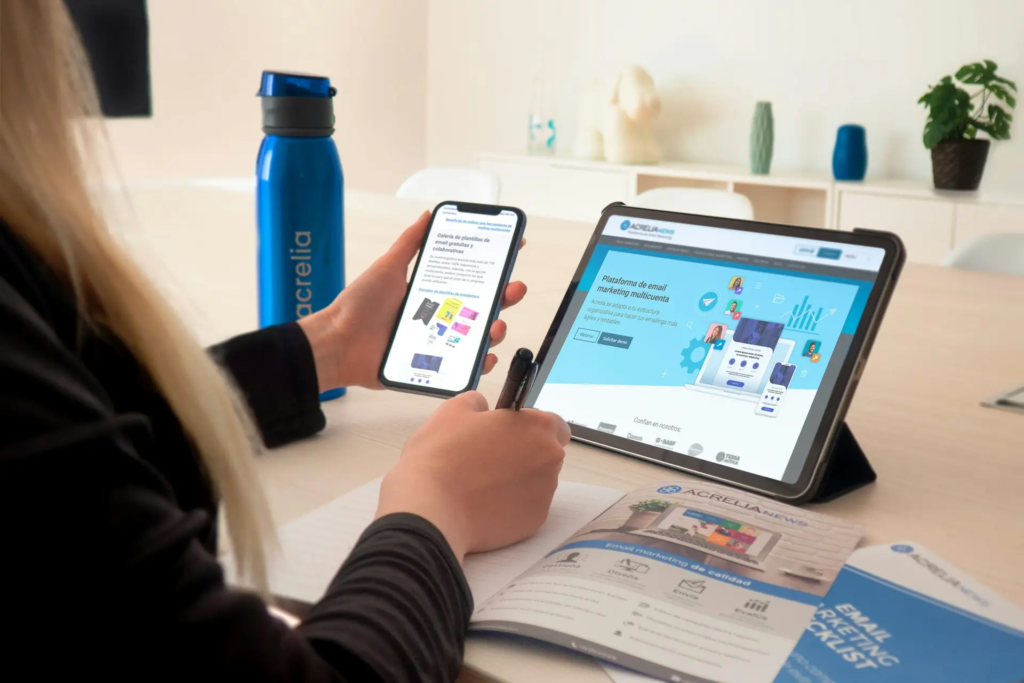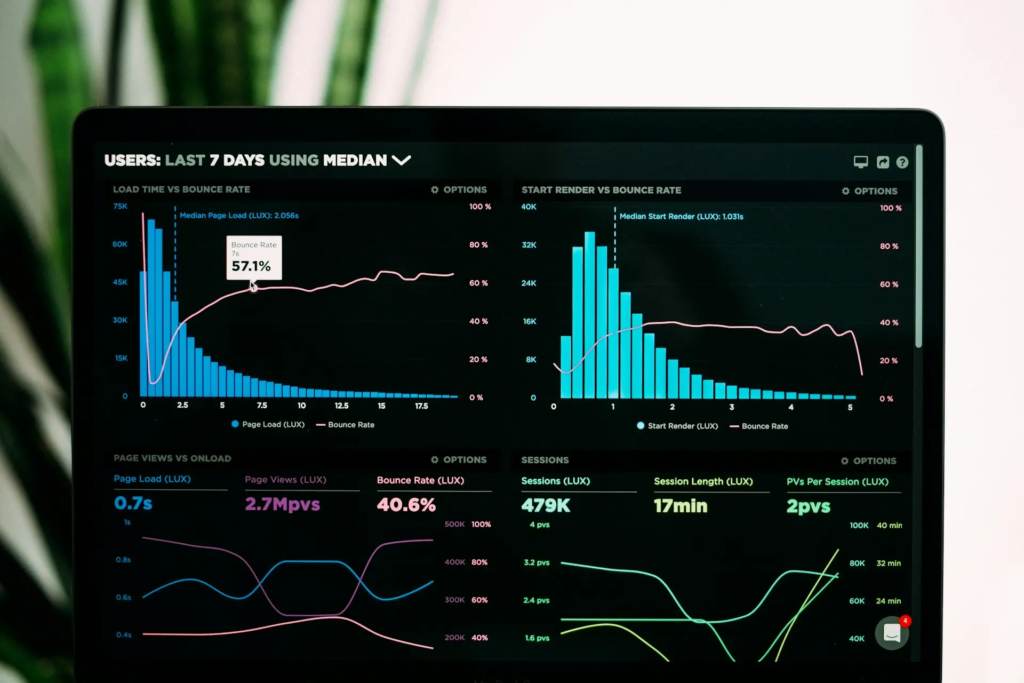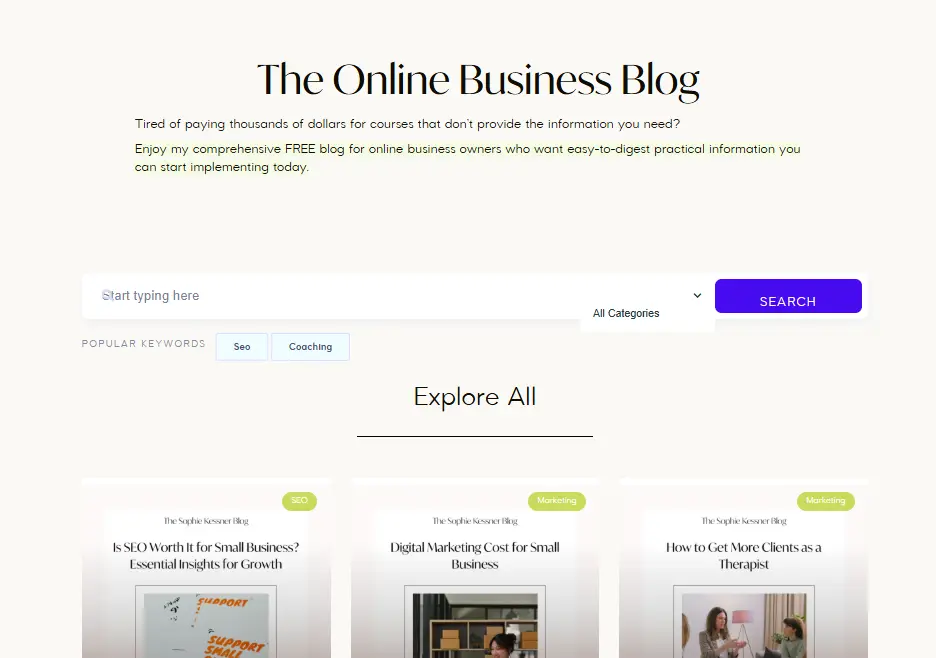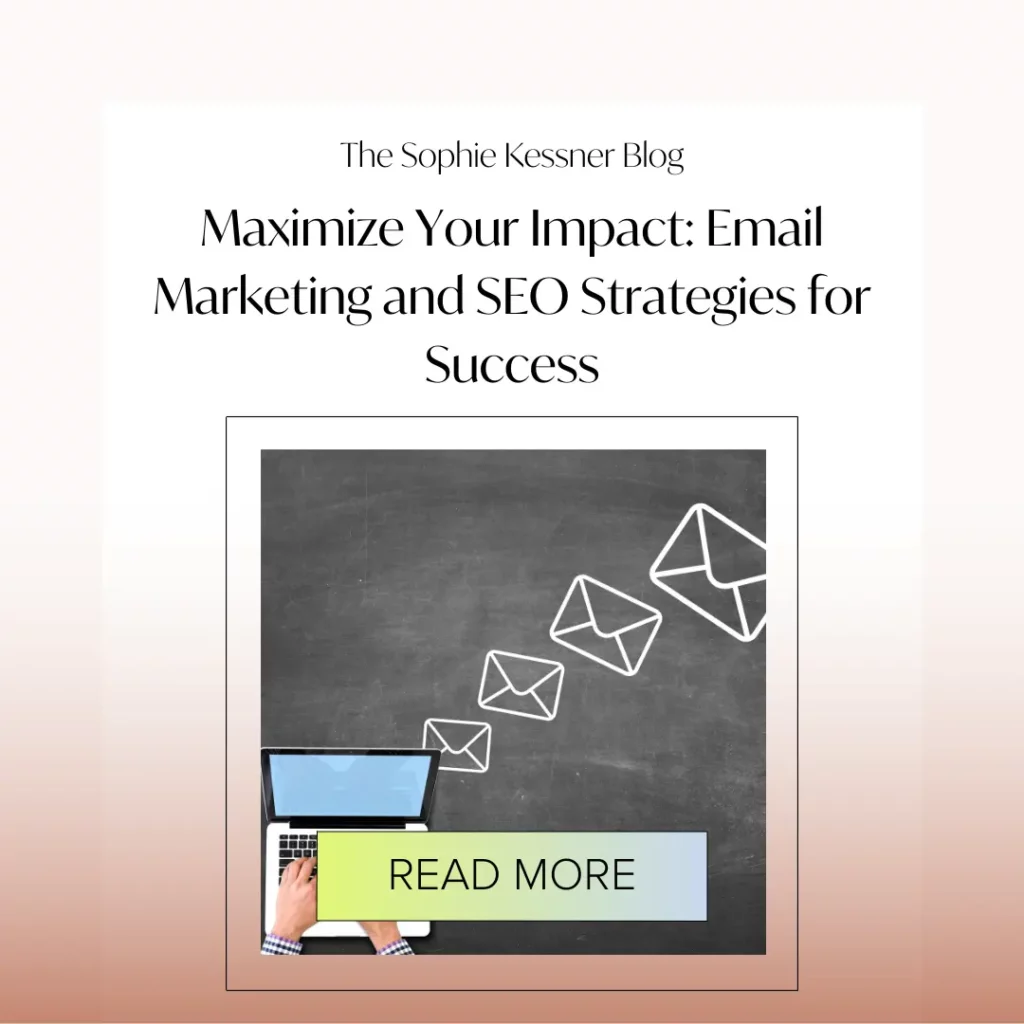Want to get more site visitors and turn them into customers? Combining email marketing and SEO using the best strategies is a great way to do that. Email marketing lets you reach your target audience directly in their inboxes with tailored content and clear calls to action. At the same time, search engine optimization helps your website rank higher in Google search and other search engines, bringing in organic traffic.
Email marketing drives strong conversions, with a 2.8% conversion rate for B2C brands and 2.4% for B2B companies, making it one of the most effective channels to turn subscribers into customers. When you combine SEO and email marketing, you can drive quality traffic to your web pages and keep your email subscribers engaged. Using keyword research and content marketing together means your blog posts and landing pages get more visibility, while your email campaigns encourage clicks and conversions. This mix helps digital marketers boost both direct traffic and SEO performance for better results.
What is Email Marketing?
Email marketing is one of the most effective ways to connect with your audience. It means sending targeted messages directly to your email subscribers to promote your products, share updates, or offer valuable content. Unlike social media or paid ads, email marketing puts your message right into your subscribers’ inboxes, making it personal and direct.
Why Email Marketing Works
Cost-effective: It’s cheaper than many other marketing channels.
High ROI: Businesses spending $100 or less per month on email report an average ROI of $21 for every dollar spent, higher than any other digital marketing channel.
Builds relationships: Regular emails help build trust and keep your brand top of mind.
Drives conversions: Well-crafted emails with clear call to action can turn readers into customers.
Key Elements of a Successful Email Marketing Campaign
Target audience: Know who you’re emailing and what they want.
Personalized subject lines: These grab attention and improve open rates. Personalized emails increase open rates by 26%.
Valuable content: Share information that your subscribers find useful.
Clear call to action: Tell readers exactly what you want them to do next.
Consistent branding: Keep your emails looking like your website and other channels.
Effective email templates: In an email campaign, creating effective email templates is crucial. Strategies like segmenting email lists to target specific audiences and using diverse content formats can significantly enhance engagement and drive conversions.
Types of Emails to Send
Welcome email: A friendly intro for new subscribers.
Weekly email or newsletter: Regular updates that keep your audience engaged.
Promotional email: Special offers or product announcements.
Email digests: Summaries of your latest blog posts or news.
Email marketing efforts work best when combined with a solid email marketing strategy. This helps you plan campaigns that speak directly to your audience’s needs and guide them through the customer journey.
Understanding SEO Fundamentals
Search engine optimization, or SEO, is all about making your website easier to find on search engines like Google. When your web pages rank higher in search engine results, you get more organic traffic—people who are actively searching for what you offer.
Why SEO Matters
Increases visibility: The higher you rank, the more people see your site. Websites ranking first in Google search results get nearly 40% of clicks, while the ninth position gets less than 2%, highlighting the importance of strong SEO.
Drives quality traffic: Visitors coming from search engines often have a clear intent to buy or learn.
Builds site authority: Good SEO helps your website earn backlinks and trust from Google’s index. Well-structured content and internal linking are crucial as they help search bots effectively discover and index new content, improving your site’s visibility in Google’s index.
Core SEO Elements to Focus On
Keyword research: Find the right keywords your target audience uses when searching.
Content quality: Create high quality content that answers questions and solves problems.
Technical SEO: Make sure your website loads fast, is mobile-friendly, and easy to navigate. Mobile-optimized emails and websites see a 15% increase in clicks.
Internal links: Link between your web pages to help search engines understand your site structure.
Backlinks: Earn high-quality backlinks from reputable websites to boost your site’s authority.
How SEO Fits Into Your Marketing Goals
SEO isn’t just about rankings. It’s about driving more traffic that converts into customers. When your content resonates with your audience and ranks well, it supports your email marketing efforts by attracting new visitors who can become email subscribers.
By focusing on these SEO fundamentals, digital marketers can improve their website content and increase organic search traffic, which ultimately helps grow their business.
How Email Marketing and SEO Work Together

Email marketing and SEO might seem like separate things, but when you combine SEO and email marketing, they boost each other to bring even better results. An email marketer plays a crucial role in integrating these two practices, highlighting the opportunities for collaboration and mutual benefit. Think of SEO as attracting new visitors to your website and email marketing as keeping them engaged and turning them into loyal customers.
SEO Benefits from Email Marketing Efforts
More Traffic: When you send email marketing campaigns that link to your blog content or landing page, you drive traffic directly to those web pages. More site visitors can indirectly boost search rankings by showing search engines that your content is valuable.
Increased Engagement: Encourage email recipients to share your website content on social media or link to it on their own sites. This helps earn backlinks and improve your site’s authority. Email campaigns that encourage sharing can increase backlinks, which boost your site’s authority and search rankings.
Improved Content Resonates: Use email metrics to understand which blog posts or web content resonates most with your audience. This helps you create better content and fine-tune your SEO strategy.
Track Different Aspects: Utilize different UTM parameters to track different aspects of your email marketing strategy. These parameters provide insights into traffic sources and overall campaign performance, allowing for a nuanced approach to measuring effectiveness.
Email Marketing Benefits from SEO Strategy
Better Keyword Research: SEO provides insights into the right keywords and topics your target audience is searching for. Use this information to create tailored content for your email subscribers.
Quality Traffic: Optimize your welcome email and other onboarding emails with relevant keywords. When new subscribers search for related topics, they are more likely to remember your brand and return to your website.
More Email Subscribers: Create lead magnets and sign-up forms based on SEO keyword research. By offering valuable content related to what people are already searching for, you can attract more qualified email subscribers.
By making SEO and email marketing work together, you can create a strong, consistent branding experience across multiple channels. This drives more quality traffic, improves email performance, and helps you reach your marketing goals.
Creating High-Quality Content for Both Channels
High quality content is the backbone of both email marketing and SEO. Whether it’s a blog post, newsletter, or landing page, your content needs to provide real value and connect with your target audience.
Why Content Quality Matters
Builds Trust: When your content resonates, readers see you as a reliable source.
Improves SEO Performance: Search engines reward websites with relevant keywords and well-structured content.
Boosts Engagement: Valuable content encourages email recipients to click through and spend more time on your site.
Tips for Creating Content That Works for Email and SEO
Use Relevant Keywords: Include the right keywords naturally in your blog content and email content. This helps your web pages rank higher in search results and makes your emails more relevant.
Write Clear Subject Lines: For email marketing campaigns, subject lines should be simple and catchy to increase open rates.
Optimize Web Content: Use meta descriptions, headers, and internal links to help search engines understand your content.
Repurpose Existing Content: Turn a popular blog post into an email digest or newsletter. This saves time and keeps your email marketing efforts consistent.
Use Visuals Wisely: Avoid image only emails, as they can hurt your email performance. Instead, add optimized images with alt text to improve SEO and make emails engaging.
What Makes Content Valuable?
It answers questions your audience is asking.
It solves problems or offers helpful tips.
It’s easy to read with clear formatting and bullet points.
It connects with your audience’s interests and needs.
Creating content that works well for both SEO and email marketing helps you drive traffic, increase engagement, and move subscribers along the customer journey. Focus on quality over quantity to get the best results.
Building and Segmenting Your Email List
Building a strong email list is key to a successful email marketing strategy. Your list is made up of people interested in your products or content—your most valuable audience.
How to Build Your Email List
Sign-up Forms: Place easy-to-find sign-up forms on your website and blog posts.
Offer Incentives: Give visitors a reason to subscribe, like a free guide or discount.
Promote on Multiple Channels: Share your sign-up link on social media and other platforms to reach more people.
Why Segmentation Matters
Not all subscribers are the same. Segmenting your email list means dividing it into smaller groups based on interests, behavior, or where they are in the customer journey. This helps you send tailored content that feels personal and relevant.
Benefits of Segmentation
Higher Open Rates: Subscribers see emails that match their needs.
Better Click Through Rate: Relevant emails get more clicks. Automated email campaigns see an average click-through rate of 5.4%, significantly higher than regular campaigns.
Improved Conversion: Personalized emails guide subscribers toward taking action.
Tips for Effective Segmentation
Use data like past purchases, website activity, or email engagement.
Create segments such as new subscribers, loyal customers, or inactive users.
Adjust your email marketing campaigns to fit each group’s interests.
By building and segmenting your email list, you increase the chances of driving quality traffic to your website and improving your overall email marketing efforts.
Crafting Effective Email Content with SEO in Mind

Creating email content that grabs attention and encourages action is essential for successful email marketing campaigns. When you combine this with SEO best practices, your emails can drive more traffic and support your search engine optimization efforts.
Personalize Your Email Content
Use your subscribers’ names and tailor content based on their interests or past behavior.
Personalized subject lines improve open rates and make your emails stand out in subscribers inboxes.
Optimize Subject Lines and Calls to Action
Keep subject lines clear, simple, and relevant to the email content.
Include a strong call to action (CTA) that tells readers exactly what to do next, like visiting a landing page or reading a blog post.
SEOs can use keyword research to craft subject lines and content that resonate with audiences, thus improving email marketing efforts.
Use Relevant Keywords Naturally
Incorporate relevant keywords in your email content to align with your SEO strategy.
This helps reinforce your message and supports your website’s search rankings when readers click through.
Design for Readability and Deliverability
Avoid image only emails since they can lower email performance and trigger spam filters.
Use a clean, mobile-friendly design with clear headings and short paragraphs.
Add alt text to images to improve accessibility and SEO. Remember, 59% of Millennials check emails on their phones, so mobile-friendly design is key.
Link Strategically
Include internal links to your website’s blog content, landing pages, or newsletter archive.
This drives more quality traffic and helps search engines crawl your site better.
Track and Improve
Monitor email metrics like open rates, click through rate, and conversion rates using tools like Google Analytics.
Use this data to refine your email marketing efforts and improve future campaigns.
By crafting email content that is both engaging and SEO-friendly, you can increase email performance, drive more traffic to your website, and support your overall marketing and SEO goals.
Using Email Campaigns to Drive Website Traffic and SEO

Email campaigns are a great way to drive traffic to your website and boost your SEO. By sending targeted and valuable content to your email subscribers, you can encourage them to visit your web pages, engage with your website content, and even help improve your search rankings.
Promoting Blog Content
When you publish a new blog post, send an email to your subscribers with a short summary and a link to read the full article. This immediately drives direct traffic to your site and increases the chances of people sharing or linking to your content.
Driving Traffic to Landing Pages
Use email marketing campaigns to promote specific landing pages, such as those for product demos, free trials, or special offers. Highlight the availability and affordability of various paid plans, emphasizing their simplicity and the trial options for potential users. Make sure your landing page is optimized with relevant keywords and a clear call to action to convert site visitors into leads or customers.
Encouraging Social Sharing and Backlinks
In your emails, ask subscribers to share your content on social media or link to it from their own websites. The more shares and backlinks you earn, the more Google search will see your website as an authority.
Using Email Digests
Send regular email digests with summaries of your top blog posts, industry news, or curated content. This keeps your audience engaged and gives them multiple reasons to visit your website.
Tracking Results
Use Google Analytics to track how much traffic comes from your email campaigns and how that traffic behaves on your site. This data helps you refine your email marketing efforts and improve your SEO strategy.
By using email campaigns strategically, you can drive quality traffic to your website, improve your SEO performance, and achieve your marketing goals.
Leveraging Email Digests and Newsletters for SEO
Email digests and newsletters are powerful tools to keep your audience engaged and drive more traffic to your website. They offer a quick way to share your latest blog content, updates, or industry news with your email subscribers.
Why Use Email Digests?
Increase Traffic: Summaries with links to your blog posts or landing pages encourage subscribers to visit your website regularly.
Boost Engagement: Regular emails keep your brand top of mind and build trust with your audience.
Support SEO Efforts: More visits to your web pages signal to search engines that your content is valuable, helping improve search rankings.
Best Practices for Email Digests
Keep content concise and focused on valuable content.
Use clear subject lines that highlight what’s inside.
Include internal links to your blog content and other important web pages.
Repurpose existing content to save time and maintain consistent branding.
Quick Tip:
Create a newsletter archive on your website. This not only helps with SEO by adding more indexed pages but also gives new visitors access to past valuable content.
By regularly sending email digests and newsletters, you can increase traffic, earn backlinks, and support your overall SEO and email marketing strategy.
Creating a Blog Post to Promote Email Marketing

Creating a blog post to promote email marketing is an effective way to drive traffic to your website and increase your email subscribers. A well-crafted blog post can help establish your brand as an authority in your industry and improve your search engine optimization (SEO) efforts. By incorporating relevant keywords and optimizing the blog post for search engines, digital marketers can increase the post’s visibility in search engine results.
Strategies for Blog Content
When creating a blog post to promote email marketing, there are several strategies to consider. First, the post should provide valuable content that resonates with your target audience. This can include tips and best practices for email marketing, as well as examples of successful email marketing campaigns. The post should also include a clear call to action (CTA) that encourages readers to sign up for your email newsletter or subscribe to your blog. Additionally, the post should be optimized for SEO by including relevant keywords, such as “email marketing” and “search engine optimization.” This ensures that your content ranks well in search engine results, driving more organic traffic to your site.
Integrating Email Sign-Up Forms
Integrating email sign-up forms into your blog post is a crucial step in promoting email marketing. The sign-up form should be prominently displayed and easy to fill out, with a clear CTA that encourages readers to subscribe. The form should also be optimized for mobile devices, as many people access blogs and websites on their smartphones. By integrating email sign-up forms into your blog post, digital marketers can increase the number of email subscribers and drive more traffic to their website. This not only boosts your email marketing efforts but also enhances your overall SEO strategy by increasing user engagement and site visits.
Improving Click Through Rates
Improving click-through rates (CTRs) is a key goal of email marketing campaigns. There are several techniques that can be used to enhance engagement and increase CTRs, including personalizing email content, using attention-grabbing subject lines, and optimizing email campaigns for mobile devices. By using these techniques, email marketers can increase the effectiveness of their campaigns and drive more traffic to their website.
Techniques to Enhance Engagement
There are several techniques that can be used to enhance engagement and improve CTRs. One effective technique is to use personalized email content that resonates with your target audience. This can include using the recipient’s name, referencing their previous purchases or interactions, and tailoring the content to their interests. Personalized emails make the recipient feel valued and understood, increasing the likelihood of engagement.
Another technique is to use attention-grabbing subject lines that encourage readers to open the email. The subject line should be clear, concise, and relevant to the content of the email. A compelling subject line can significantly improve open rates, which in turn can lead to higher CTRs.
Additionally, email campaigns should be optimized for mobile devices, as many people access their email on their smartphones. Ensure that your emails are mobile-friendly by using a responsive design, keeping the content concise, and using large, tappable buttons for CTAs. By using these techniques, email marketers can increase engagement and improve CTRs, driving more traffic to their website and enhancing their search engine optimization (SEO) efforts.
Measuring and Optimizing Email Campaigns
Tracking your email metrics is key to improving your email marketing efforts and boosting SEO performance. Without measuring, you won’t know what’s working or where to improve.
Important Email Metrics to Watch
Open rates: Shows how many subscribers opened your email. A strong subject line and relevant content help improve this. The average open rate for email marketing campaigns is around 25%.
Click through rate (CTR): Measures how many clicked on links inside your email. This drives more traffic to your website.
Conversion rate: Tracks how many took the desired action, like signing up or buying.
Bounce rate: Indicates emails that didn’t reach subscribers. Keeping your list clean helps reduce this.
Unsubscribe rate: Shows if your content matches your audience’s interests.
Using Google Analytics
Connect your email campaigns to Google Analytics to see how email traffic behaves on your website. Track metrics like session duration, pages per visit, and conversions to understand the quality of traffic you’re driving.
Optimize for Better Results
A/B testing: Try different subject lines, email content, or calls to action to see what performs best.
Segmentation: Send tailored emails to different groups for higher engagement.
Personalization: Use subscriber data to make emails feel more relevant.
Quick Tip:
Regularly review your email performance and SEO results to adjust your strategy. Small changes can lead to big improvements in driving quality traffic and achieving marketing goals.
Advanced Strategies: Integrating Email and SEO for Maximum ROI
To get the most from your marketing and SEO efforts, it helps to take a more integrated approach. Combining email marketing and SEO in smart ways can boost your results and save time.
Use Data to Personalize Content
Look at your SEO efforts and email metrics to see what topics and keywords your audience likes. Use this info to create tailored content that fits both your blog content and email marketing campaigns. When content resonates, it drives more traffic and keeps subscribers engaged.
Automate Cross-Channel Campaigns
Set up automated emails triggered by SEO-related actions. For example, if someone visits a specific landing page or blog post, send a follow-up email with related content or offers. This keeps your audience moving through the customer journey without extra effort.
Keep Branding Consistent
Make sure your emails, website, and other channels have consistent branding and messaging. This builds trust and helps your target audience recognize your brand no matter where they find you.
Repurpose Content Across Channels
Turn your best blog posts into email digests or newsletters. You can also use email feedback to improve your website content. This saves time and ensures your marketing and SEO efforts support each other.
Focus on the Right Keywords
Use keyword research from your SEO strategy to guide your email subject lines, content, and calls to action. This helps attract the right audience and improves your chances of driving quality traffic.
By combining these advanced strategies, email marketers and digital marketers can maximize their marketing goals and improve both email performance and SEO results.
Common Pitfalls and How to Avoid Them
Even with a solid email marketing strategy and SEO plan, mistakes can hold you back. Here are some common pitfalls and how to avoid them:
Ignoring Segmentation: Sending the same email to everyone lowers engagement. Segment your list to send tailored content.
Skipping Keyword Research: Without the right keywords, your SEO efforts and email content won’t reach the right audience. Always do keyword research.
Overloading Emails with Images: Image only emails can hurt email performance and trigger spam filters. Balance text and visuals.
Neglecting Analytics: Without tracking email metrics and SEO performance, you won’t know what’s working. Use tools like Google Analytics regularly.
Inconsistent Branding: Mixed messages confuse your audience. Keep branding and tone consistent across emails and your website.
Avoid these mistakes to improve your email marketing campaigns, drive more quality traffic, and boost your site’s authority in search engine results.
Conclusion and Action Steps
Combining email marketing and SEO creates a powerful way to grow your website and connect with your audience. By focusing on high quality content, targeted email campaigns, and smart SEO strategies, you can drive more traffic, improve search rankings, and boost conversions.
Start by building a segmented email list and crafting tailored email content with clear calls to action. Use keyword research to guide both your website content and email marketing efforts. Promote your blog posts and landing pages through email campaigns to increase direct and organic traffic.
Don’t forget to track your email metrics and SEO performance using tools like Google Analytics. Use the data to optimize subject lines, content, and calls to action for better results. Repurpose your best content across multiple channels to save time and keep your audience engaged.
If you’re ready to take control of your SEO and email marketing, check out Sass and SEO’s DIY SEO course. It’s designed to help email marketers and digital marketers like you master keyword research, technical SEO, and content marketing—all at your own pace. Start boosting your site’s authority and driving quality traffic today.
Frequently Asked Questions (FAQs)
1. How does email marketing help improve SEO?
Email marketing drives direct traffic to your website by encouraging subscribers to visit your blog posts and landing pages. Increased traffic and engagement can indirectly boost your search rankings.
2. What is the best way to build an email list for SEO purposes?
Use sign-up forms on your website and offer valuable content like free guides or discounts. Promote your list on social media and segment subscribers to send tailored content.
3. How often should I send emails to support my SEO strategy?
Sending a weekly email or regular email digests keeps your audience engaged without overwhelming them. Consistency helps maintain interest and drives steady traffic to your site.
4. Can I use the same content for both my website and email campaigns?
Yes! Repurposing existing blog content into email digests or newsletters saves time and ensures consistent messaging across channels. Just tailor the email content to fit your subscribers’ needs.
5. What email metrics should I track to improve my campaigns?
Focus on open rates, click through rates, and conversion rates to see how well your emails perform. Use Google Analytics to track how email traffic behaves on your website.





